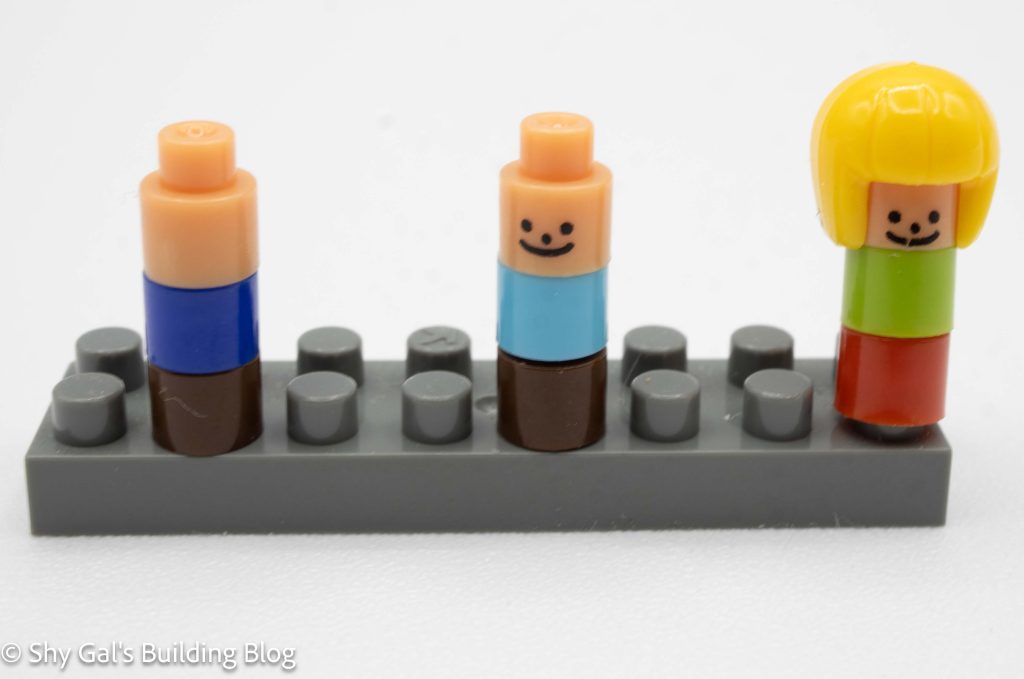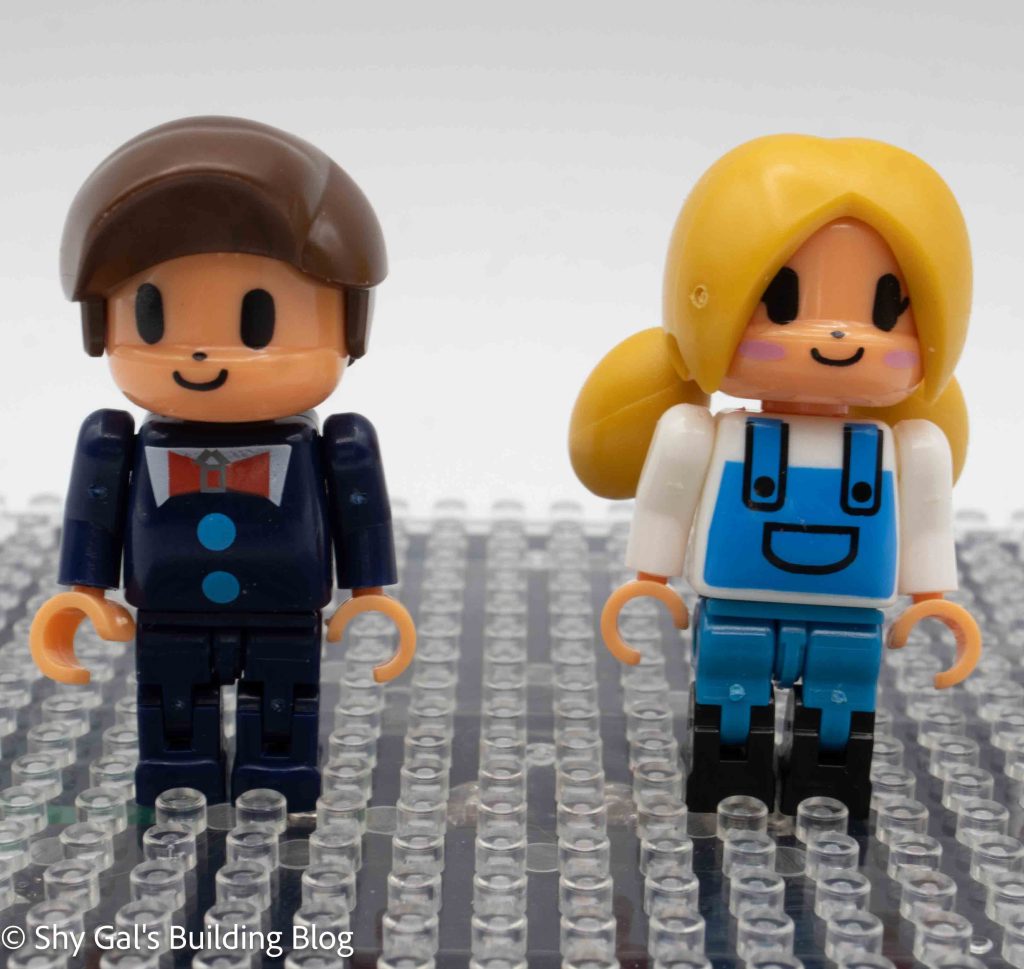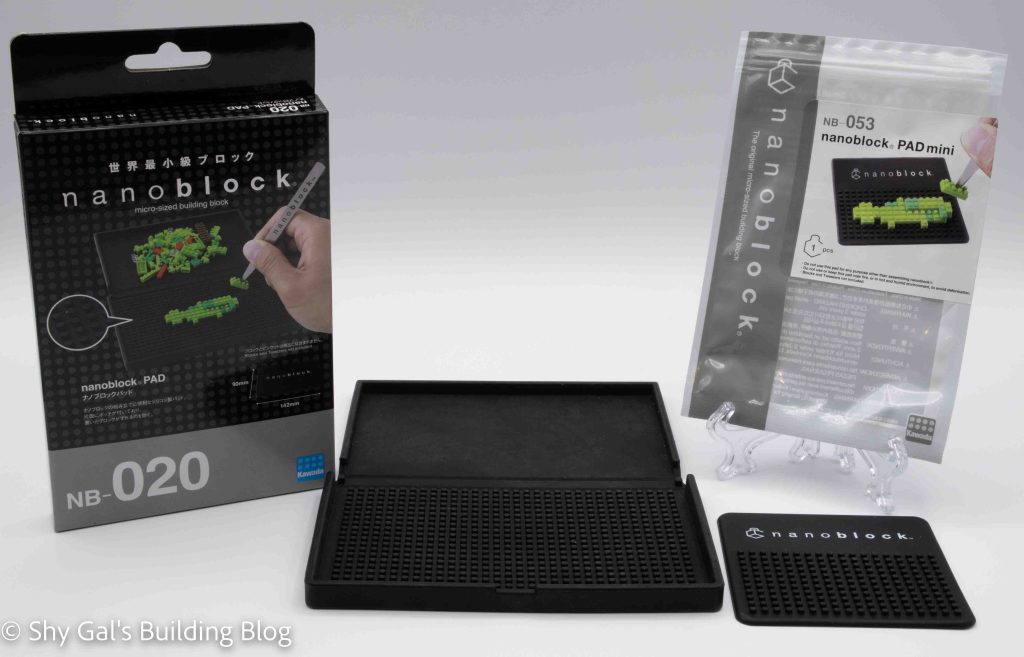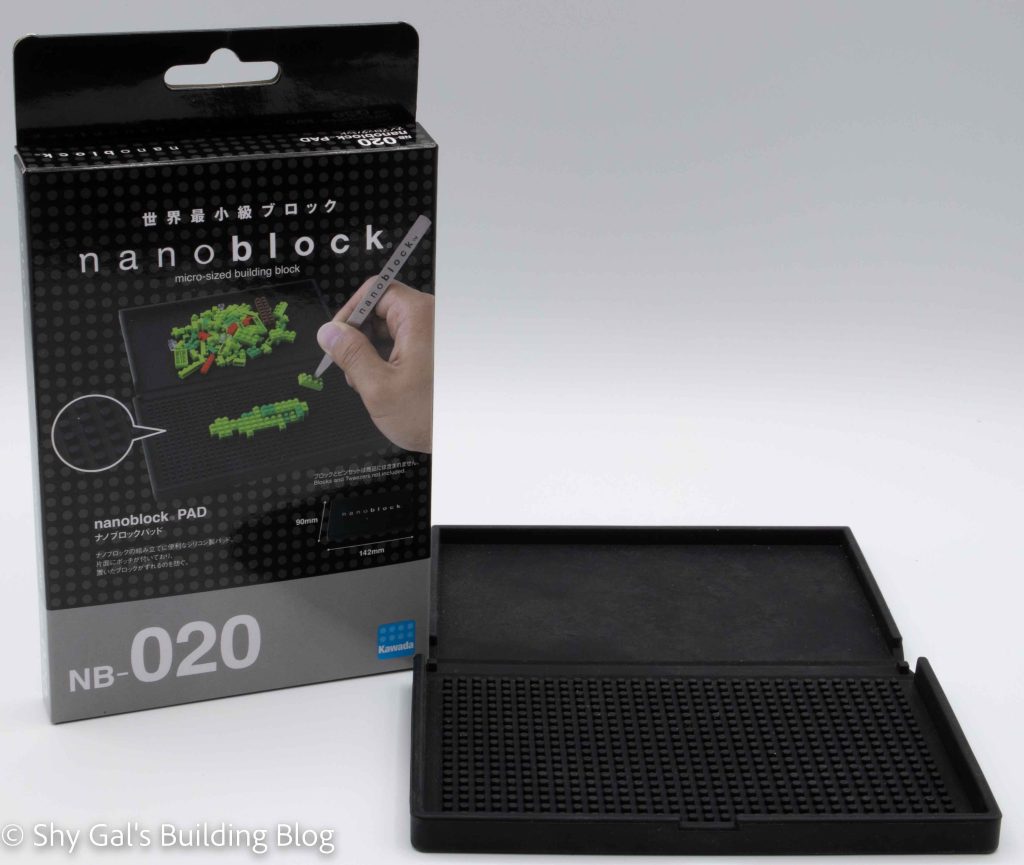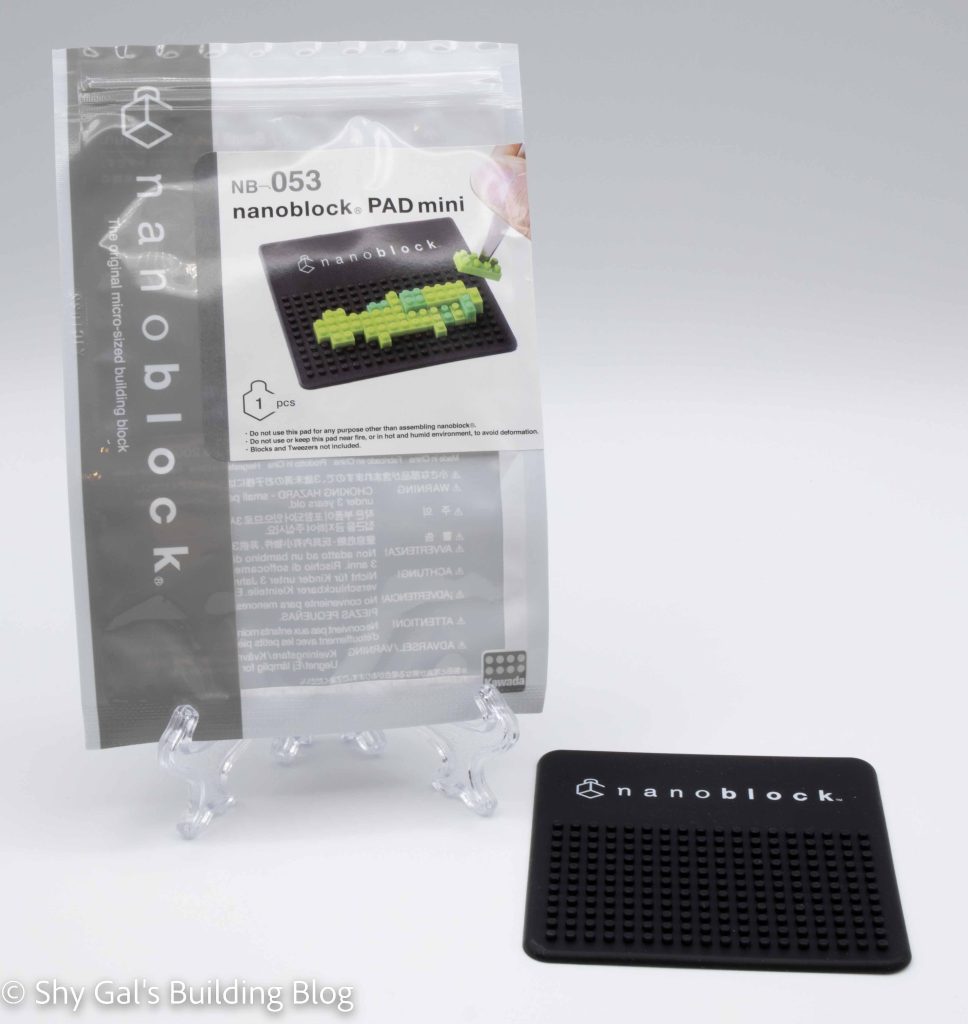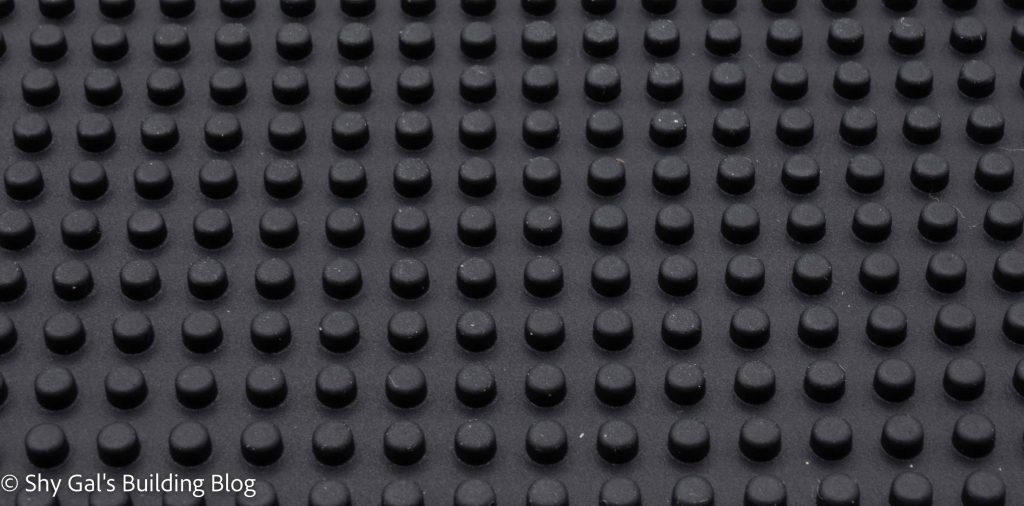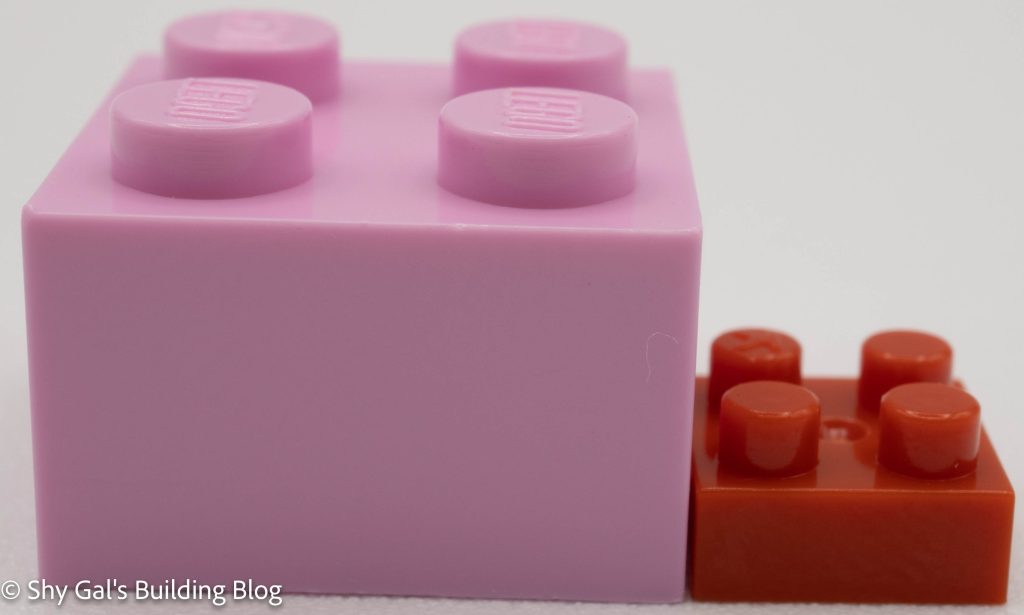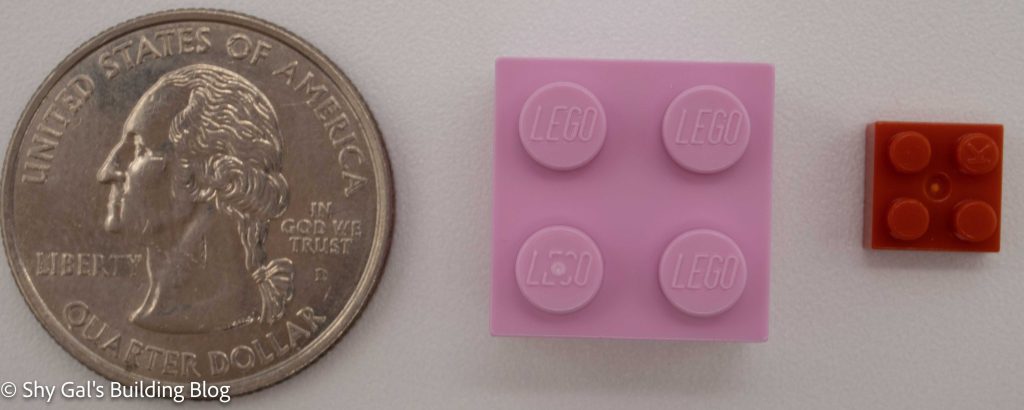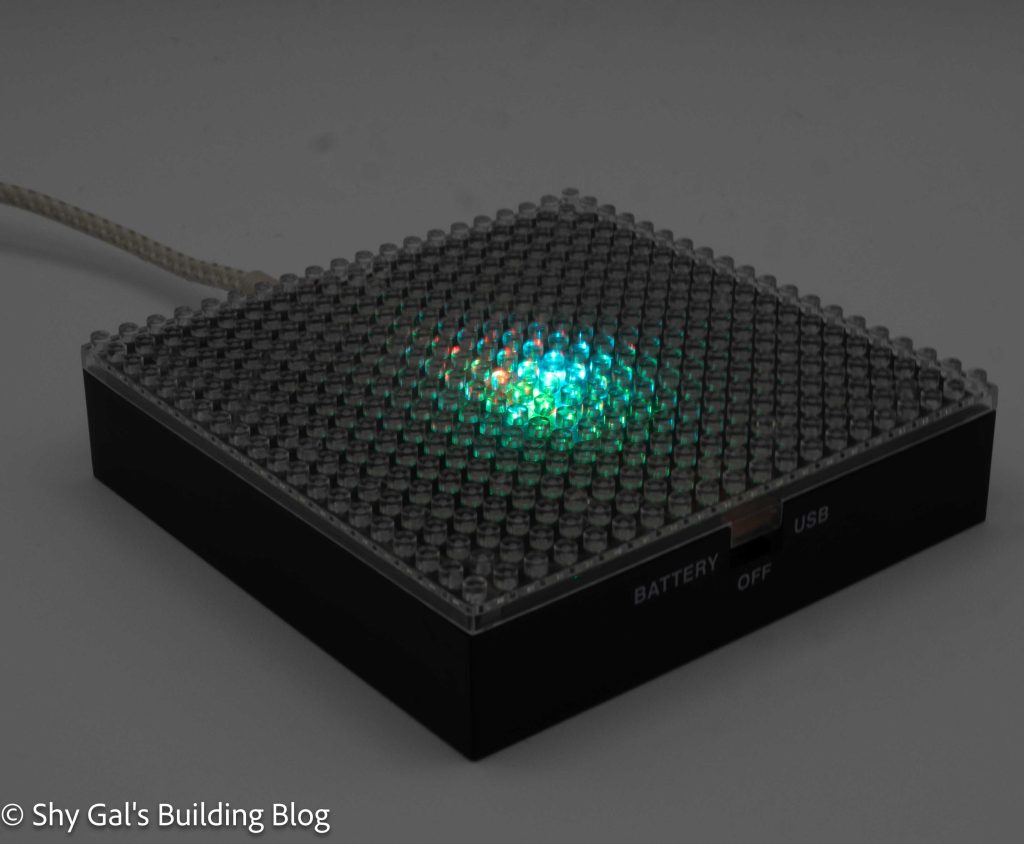
Number: NB-11 & NB-026
Number of Pieces: 1
Over the past few years, I have picked up a couple kits that depend on this display plate to create effects on the build. An example is the Kaminarimon gate build. The Kaminarimon Gate build is made so that the lantern in the middle lights up.
There are also builds where you can add a plate to create a lighting effect. An example is the Tokyo Tower Deluxe build, so you can light the building at the base of the tower. (I haven’t done this, which is why there are no pictures.)
There are 2 different baseplates; they have item numbers NB-011 and NB-026. Both light the plate and rotate between 3 colors; red, blue, and green. In both cases, there is a power switch on the side to turn the light on and off.
NB-011
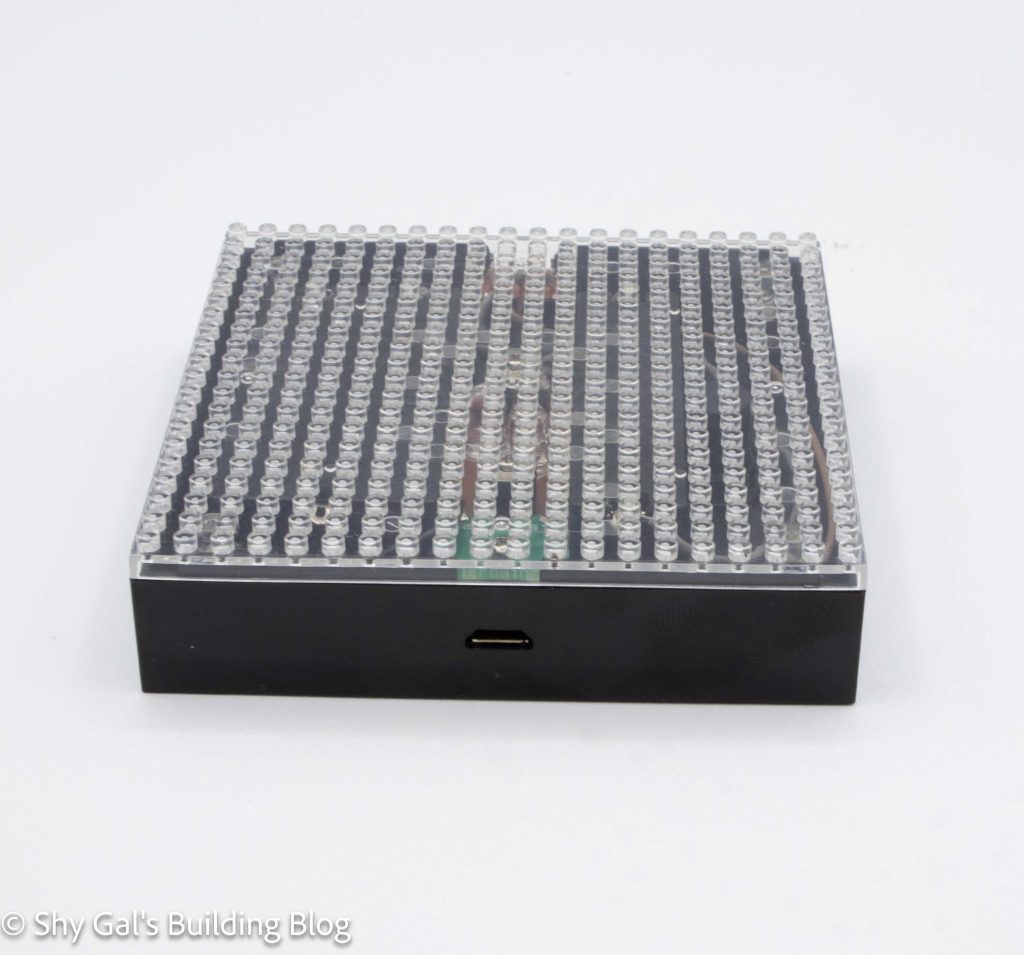
Based on the fact that NB-11 has the lower number, it is the original base plate. It comes with the Tokyo Disney castle builds.
NB-11 can only run on 3 AAA batteries. If you let it sit for too long with the batteries inside, it may leak acid.
NB-026
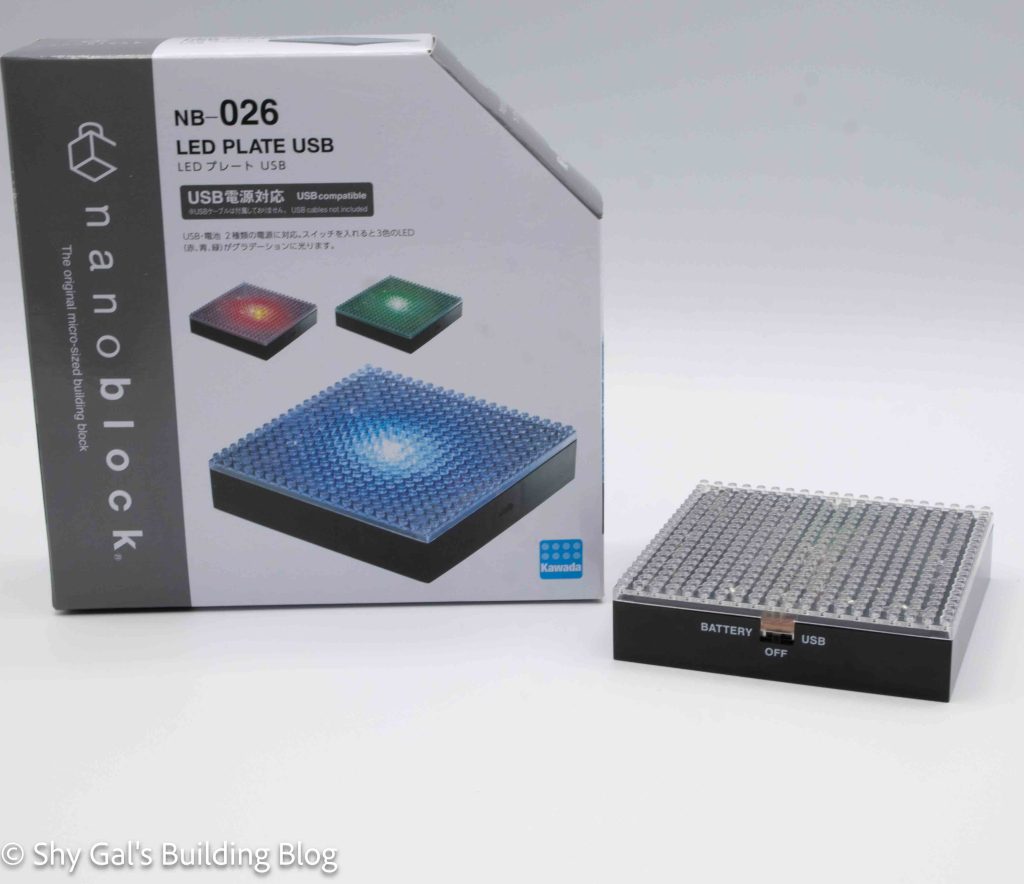
NB-26 is an updated version of the LED plate. It can run on either AAA batteries or on a micro USB. I have only used the USB.
I generally don’t use the lighting platforms for builds that do not include clear bricks. This is because you can’t really see where the light is shining through. I do think that the effect of the lighting does add a lot to builds that are primarily clear bricks or have a gap that the light can come through.
Things I liked:
- It creates new lighting angles for buildings
Things I didn’t like:
- I wish there was a white light setting
Link to order: Amazon
